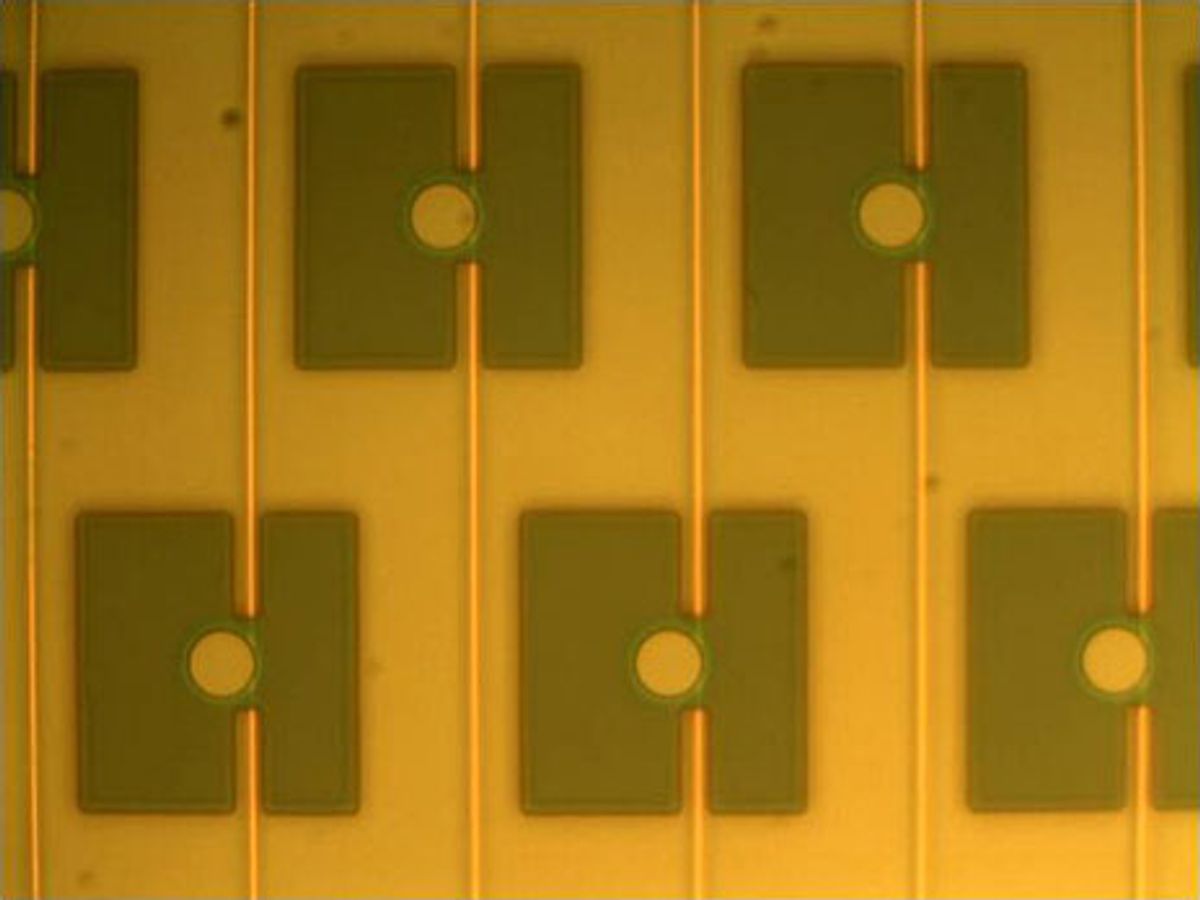29 January 2010—The dome of St. Paul’s Cathedral in London is the site of a curious phenomenon. If you whisper close to the wall of the dome’s circular gallery, you will be heard distinctly by someone standing in the gallery at the opposite side of the dome, at a distance of 42 meters. The sound waves bounce along the wall of the dome and propagate without loss. Now a group of researchers from Belgium, the Netherlands, and France—led by Geert Morthier of microelectronics research firm Imec and Ghent University, both in Belgium—are using a tiny whispering gallery for photons, called a microdisk laser, to create an optical memory cell that operates using mere femtojoules of energy and which might form an important component in future optical communication technology. Because of the low power consumption and speed of optical circuits, researchers expect that microdisk laser-based memories will be able to compete with today’s silicon-based circuits for routing telecom signals.
Microdisk lasers have been under investigation for about 20 years. In a conventional laser, light bounces back and forth between two mirrors, amplifying with each pass. But in a microdisk laser, photons travel around, surfing along the circular cavity wall. What makes these lasers so interesting is that the photons can travel around the microdisk in either direction, clockwise or counterclockwise. The photons need only a light pulse to nudge them in the right direction. In this way, the microdisk laser can function in much the same way as a flip-flop, a circuit that holds the state of its input even after that input disappears.
The team led by Morthier created indium phosphide (InP) microdisks that are 7.5 micrometers in diameter. These lasers consume very little power because of their small size and the fact that the lasing material is pumped by a tiny electric current instead of an external light source. The microdisks are glued onto a silicon chip, using a polymer known as DVS-BCB. Light pulses are led to or read out from the laser via waveguides built into the surface of the microchip and coupled to the microdisks.
“The most important aspect of this research is that we were able to demonstrate an optical memory that requires very little power,” says Morthier. ”Optical circuitry has been blamed for using much more power than its electronic counterparts.”
But power wasn’t the only problem they had to overcome. Microdisk laser researchers have found it difficult to force the light into a pure clockwise or counterclockwise direction. The problem is caused by light scattering off imperfections on the inside of the cavity walls. ”You get a clear propagation in one direction or the other only if the sidewalls are smooth,” says Morthier. Finding a way to make smooth sidewalls was a difficult task. ”It took us five years to get the lasers to act as flip-flops,” says team member Dries Van Thourhout of Ghent University.
The microdisks worked so well that they could be linked together to form a register analogous to transistor-based registers, whereby each laser flips the next one, explains Van Thourhout. ”In the past we needed amplifiers [to construct a register], and this used power as well,” he says.
Govind Agrawal, a physicist at the University of Rochester, in New York state, thinks that the successful integration of an InP laser onto a silicon chip is an important advance in itself. But the ability to switch the flip-flop with a femtojoule of energy is just as important. ”It will initiate a lot of research,” he says.
About the Author
Alexander Hellemans is a science writer based in London. In the October 2005 issue he covered accusations that the Vatican’s radio transmitters were causing cancer.





